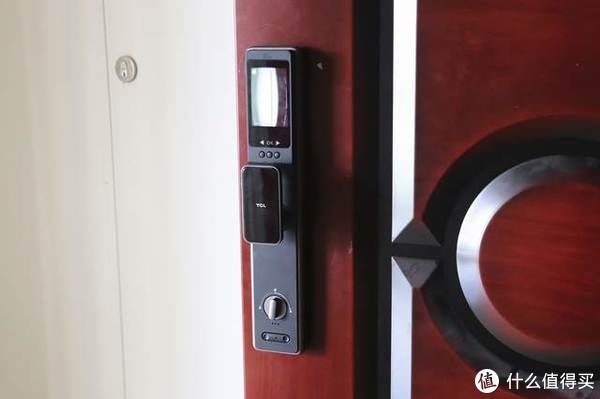еӨ©дёӢд№ӢдәӢеёёжҲҗдәҺеӣ°зәҰпјҢиҖҢиҙҘдәҺеҘўйқЎгҖӮиҝҷзҜҮж–Үз« дё»иҰҒи®Іиҝ°Android AppдёӯдҪҝз”ЁGalleryеҲ¶дҪңе№»зҒҜзүҮж’ӯж”ҫж•Ҳжһңзӣёе…ізҡ„зҹҘиҜҶпјҢеёҢжңӣиғҪдёәдҪ жҸҗдҫӣеё®еҠ©гҖӮ
http://www.jb51.net/article/83313.htm
жҲ‘们жңүж—¶еҖҷеңЁiPhoneжүӢжңәдёҠжҲ–иҖ…WindowsдёҠйқўзңӢеҲ°еҠЁжҖҒзҡ„еӣҫзүҮпјҢеҸҜд»ҘйҖҡиҝҮйј ж ҮжҲ–иҖ…жүӢжҢҮи§Ұж‘ёжқҘ移еҠЁе®ғпјҢдә§з”ҹеҠЁжҖҒзҡ„еӣҫзүҮж»ҡеҠЁж•ҲжһңпјҢиҝҳеҸҜд»Ҙж №жҚ®дҪ зҡ„зӮ№еҮ»жҲ–иҖ…и§Ұж‘ёи§ҰеҸ‘е…¶д»–дәӢ件е“Қеә”гҖӮеҗҢж ·зҡ„пјҢеңЁandroidдёӯд№ҹжҸҗдҫӣиҝҷиҝҷз§Қе®һзҺ°пјҢиҝҷе°ұжҳҜйҖҡиҝҮGalleryеңЁUIдёҠе®һзҺ°зј©з•ҘеӣҫжөҸи§ҲеҷЁгҖӮ
жҲ‘们жқҘзңӢзңӢGalleryжҳҜеҰӮдҪ•жқҘе®һзҺ°зҡ„пјҢе…ҲжҠҠжҺ§д»¶д»ҺеёғеұҖж–Ү件дёӯеЈ°жҳҺпјҢеҸӘйңҖзҹҘйҒ“IDдёәgalleryгҖӮ
?
| 1 | Gallery gallery = (Gallery) findViewById(R.id.gallery);
|
?
| 1 | ImageAdapterгҖӮ gallery.setAdapter(new ImageAdapter(this));
|
?
| 1 2 3 4 5 6 7 | private Integer[] mps = {
R.drawable.icon1,
R.drawable.icon2,
R.drawable.icon3,
R.drawable.icon4,
R.drawable.icon5
};
|
?
| 1 2 3 4 5 6 7 8 9 10 11 12 13 14 15 16 17 18 19 20 21 22 23 24 25 26 27 | public class ImageAdapter extends BaseAdapter {
private Context mContext;
public ImageAdapter(Context context) {
mContext = context;
}
public int getCount() {
return mps.length;
}
public Object getItem(int position) {
return position;
}
public long getItemId(int position) {
return position;
}
public View getView(int position, View convertView, ViewGroup parent) {
ImageView image = new ImageView(mContext);
image.setImageResource(mps[position]);
image.setAdjustViewBounds(true);
image.setLayoutParams(new Gallery.LayoutParams(
LayoutParams.WRAP_CONTENT, LayoutParams.WRAP_CONTENT));
return image;
}
} |
?
| 1 2 3 4 5 6 7 8 9 10 | gallery.setOnItemSelectedListener(new AdapterView.OnItemSelectedListener() {
@Override
public void onItemSelected(AdapterView<
?>
parent, View v,int position, long id) {
}
@Override
public void onNothingSelected(AdapterView<
?>
arg0) {
//иҝҷйҮҢдёҚеҒҡе“Қеә”
}
});
|
жңҖиҝ‘дёӢиҪҪеҮ ж¬ҫжүӢжңәеә”з”Ёз ”з©¶дәҶдёӢпјҢеҸ‘дәҶжңүдәӣиҮӘе®ҡд№үжҺ§д»¶жғҠдәәзҡ„зӣёдјјпјҢжүҖд»ҘжҲ‘и§үеҫ—еңЁд»ҘеҗҺзҡ„ејҖеҸ‘дёӯпјҢеҜ№дёҖдәӣжҺ§д»¶зҡ„еӨҚз”ЁиӮҜе®ҡжҳҜеҫҲеӨҡзҡ„пјҢеңЁйҰ–йЎөпјҲйқһиҪҪе…ҘйЎөпјүдёҖиҲ¬йғҪдјҡжңүдёҖдёӘе№»зҒҜзүҮж•ҲжһңпјҢж—ўеҸҜд»Ҙж”ҫе№ҝе‘Ҡд№ҹеҸҜд»Ҙж”ҫжҺЁиҚҗпјҢеҰӮжһңеӣҫзүҮи®ҫи®Ўзҡ„еҘҪзңӢпјҢж•ҲжһңдёҖиҲ¬йғҪдјҡдёҚй”ҷпјҢ既然用еҲ°дәҶGalleryпјҢд№ҹйҷ„еёҰжҠҠзӣёжЎҶж•Ҳжһңзҡ„дҫӢеӯҗеҶҷдёҖеҶҷпјҲж·ҳе®қиҜҰжғ…з•Ңйқўзҡ„е•Ҷе“ҒеӣҫзүҮж»‘еҠЁеұ•зӨәпјү
пјҲ1пјүе№»зҒҜзүҮж•Ҳжһңеұ•зӨәпјҡ

ж–Үз« еӣҫзүҮ

ж–Үз« еӣҫзүҮ
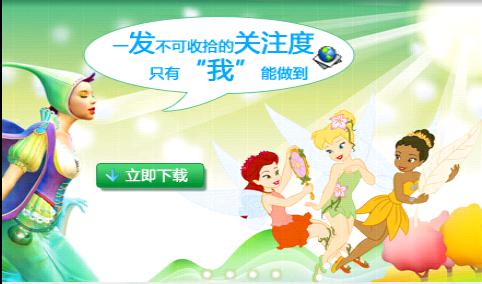
ж–Үз« еӣҫзүҮ
гҖҗAndroid AppдёӯдҪҝз”ЁGalleryеҲ¶дҪңе№»зҒҜзүҮж’ӯж”ҫж•ҲжһңгҖ‘пјҲ2пјүе•Ҷе“ҒеӣҫзүҮж»‘еҠЁеұ•зӨә
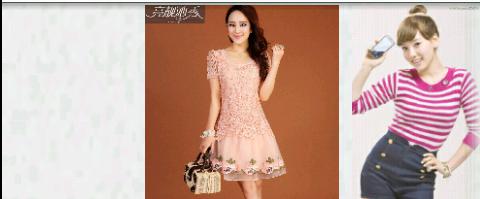
ж–Үз« еӣҫзүҮ

ж–Үз« еӣҫзүҮ
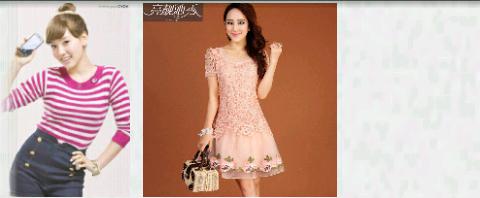
ж–Үз« еӣҫзүҮ
жҹҘзңӢеӨ§еӣҫпјҡ
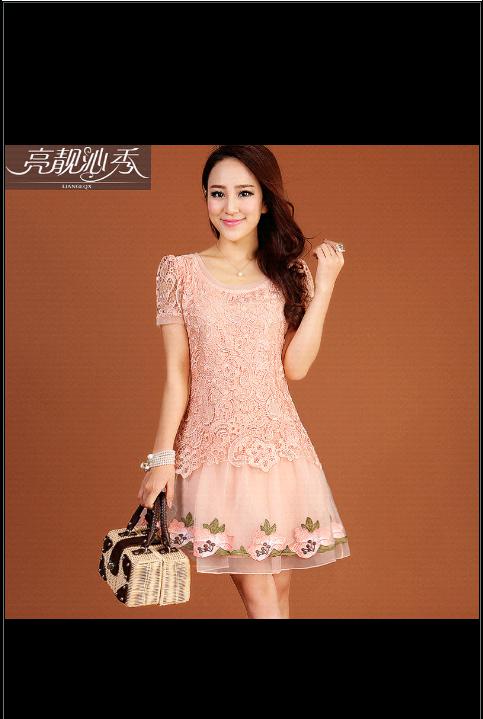
ж–Үз« еӣҫзүҮ
дәҢгҖҒйғЁеҲҶд»Јз ҒиҜҙжҳҺ
1гҖҒе№»зҒҜзүҮж•Ҳжһңзҡ„е®һзҺ°пјҡ
иҮӘе®ҡд№үGalleryпјҡDetailGallery.java
еҸҜи§Ҷз•ҢйқўпјҡImgSwitchActivity.java
йҖӮй…Қзұ»пјҡGalleryIndexAdapter.java
иҮӘе®ҡд№үGalleryдё»иҰҒйҮҚеҶҷonFlingйҖҡиҝҮжҢүдёӢе’ҢжқҫжүӢзҡ„дҪҚзҪ®дёҚеҗҢжҜ”иҫғжҳҜеҗ‘еҸіз§»еҠЁиҝҳжҳҜеҗ‘е·Ұ移еҠЁпјҢйғЁеҲҶд»Јз ҒеҰӮдёӢпјҡ
?
| 1 2 3 4 5 6 7 8 9 10 11 12 13 14 15 | private boolean isScrollingLeft(MotionEvent e1, MotionEvent e2) {
return e2.getX() >
e1.getX();
}
@Override
public boolean onFling(MotionEvent e1, MotionEvent e2, float velocityX,
float velocityY) {
int kEvent;
if (isScrollingLeft(e1, e2)) {
kEvent = KeyEvent.KEYCODE_DPAD_LEFT;
} else {
kEvent = KeyEvent.KEYCODE_DPAD_RIGHT;
}
onKeyDown(kEvent, null);
return true;
} |
?
| 1 2 3 4 5 6 7 8 9 10 11 12 13 14 15 16 17 18 | @Override
public int getCount() {
// TODO Auto-generated method stub
return Integer.MAX_VALUE;
}
…
…
@Override
public View getView(int position, View convertView, ViewGroup arg2) {
// TODO Auto-generated method stub
ImageView imageView = new ImageView(context);
imageView.setBackgroundResource(imagList.get(position%imagList.size()));
imageView.setScaleType(ScaleType.FIT_XY);
imageView.setLayoutParams(new Gallery.LayoutParams(Gallery.LayoutParams.FILL_PARENT
, Gallery.LayoutParams.WRAP_CONTENT));
return imageView;
} |
3гҖҒеңЁеҸҜи§Ҷз•ҢйқўйҮҢйқўе®һзҺ°йҖ»иҫ‘жҺ§еҲ¶пјҢйҖҡиҝҮе®ҡж—¶еҷЁе®ҡж—¶еҲ·ж–°е№»зҒҜзүҮпјҢе®ҡж—¶еҷЁйҖҡиҝҮе®ҡж—¶еҸ‘йҖҒж¶ҲжҒҜпјҢж¶ҲжҒҜжҺҘеҸ—еӨ„зҗҶжңәеҲ¶жҺҘ收еҲ°ж¶ҲжҒҜд№ӢеҗҺпјҢе°ұжЁЎжӢҹж»‘еҠЁдәӢ件пјҢи°ғз”ЁGalleryзҡ„onFlingж–№жі•е®һзҺ°еӣҫзүҮиҮӘеҠЁеҲҮжҚўж•ҲжһңгҖӮйҖүжӢ©жҢүй’®зҡ„жҳҫзӨәж•ҲжһңпјҲRadioButtonпјүйңҖиҰҒеңЁGalleryзҡ„setOnItemSelectedListenerиҝӣиЎҢеӨ„зҗҶгҖӮ
?
| 1 2 3 4 5 6 7 8 9 10 11 12 13 14 15 16 17 18 19 20 21 22 23 24 25 26 27 28 29 30 31 32 33 34 35 36 37 38 39 40 41 42 43 44 45 46 47 48 49 50 51 52 53 54 55 56 57 58 59 60 61 62 63 64 65 66 67 68 69 70 71 72 73 74 75 76 77 78 79 | //е®ҡж—¶еҷЁе’ҢдәӢ件еӨ„зҗҶ5з§’еҲ·ж–°дёҖж¬Ўе№»зҒҜзүҮ
/** еұ•зӨәеӣҫжҺ§еҲ¶еҷЁпјҢе®һзҺ°еұ•зӨәеӣҫеҲҮжҚў */
final Handler handler_gallery = new Handler() {
public void handleMessage(Message msg) {
/* иҮӘе®ҡд№үеұҸ幕жҢүдёӢзҡ„еҠЁдҪң */
MotionEvent e1 = MotionEvent.obtain(SystemClock.uptimeMillis(),
SystemClock.uptimeMillis(), MotionEvent.ACTION_UP,
89.333336f, 265.33334f, 0);
/* иҮӘе®ҡд№үеұҸ幕ж”ҫејҖзҡ„еҠЁдҪң */
MotionEvent e2 = MotionEvent.obtain(SystemClock.uptimeMillis(),
SystemClock.uptimeMillis(), MotionEvent.ACTION_DOWN,
300.0f, 238.00003f, 0);
myGallery.onFling(e2, e1, -800, 0);
/* з»ҷgalleryж·»еҠ жҢүдёӢе’Ңж”ҫејҖзҡ„еҠЁдҪңпјҢе®һзҺ°иҮӘеҠЁж»‘еҠЁ */
super.handleMessage(msg);
}
};
protected void onResume() {
autogallery();
super.onResume();
};
private void autogallery() {
/* и®ҫзҪ®е®ҡж—¶еҷЁпјҢжҜҸ5з§’иҮӘеҠЁеҲҮжҚўеұ•зӨәеӣҫ */
Timer time = new Timer();
TimerTask task = new TimerTask() {
@Override
public void run() {
Message m = new Message();
handler_gallery.sendMessage(m);
}
};
time.schedule(task, 8000, 5000);
}
//жҢҮзӨәжҢүй’®е’ҢgalleryеҲқе§ӢеҢ–иҝҮзЁӢд»ҘеҸҠдәӢ件зӣ‘еҗ¬ж·»еҠ иҝҮзЁӢ
//еҲқе§ӢеҢ–
void init(){
myGallery = (DetailGallery)findViewById(R.id.myGallery);
gallery_points = (RadioGroup) this.findViewById(R.id.galleryRaidoGroup);
ArrayList<
Integer>
list = new ArrayList<
Integer>
();
list.add(R.drawable.banner1);
list.add(R.drawable.banner2);
list.add(R.drawable.banner3);
list.add(R.drawable.banner4);
GalleryIndexAdapter adapter = new GalleryIndexAdapter(list, context);
myGallery.setAdapter(adapter);
//и®ҫзҪ®е°ҸжҢүй’®
gallery_point = new RadioButton[list.size()];
for (int i = 0;
i <
gallery_point.length;
i++) {
layout = (LinearLayout) inflater.inflate(R.layout.gallery_icon, null);
gallery_point[i] = (RadioButton) layout.findViewById(R.id.gallery_radiobutton);
gallery_point[i].setId(i);
/* и®ҫзҪ®жҢҮзӨәеӣҫжҢүй’®ID */
int wh = Tool.dp2px(context, 10);
RadioGroup.LayoutParams layoutParams = new RadioGroup.LayoutParams(wh, wh);
// и®ҫзҪ®жҢҮзӨәеӣҫеӨ§е°Ҹ
gallery_point[i].setLayoutParams(layoutParams);
layoutParams.setMargins(4, 0, 4, 0);
// и®ҫзҪ®жҢҮзӨәеӣҫmarginеҖј
gallery_point[i].setClickable(false);
/* и®ҫзҪ®жҢҮзӨәеӣҫжҢүй’®дёҚиғҪзӮ№еҮ» */
layout.removeView(gallery_point[i]);
//дёҖдёӘеӯҗи§ҶеӣҫдёҚиғҪжҢҮе®ҡдәҶеӨҡдёӘзҲ¶и§Ҷеӣҫ
gallery_points.addView(gallery_point[i]);
/* жҠҠе·Із»ҸеҲқе§ӢеҢ–зҡ„жҢҮзӨәеӣҫеҠЁжҖҒж·»еҠ еҲ°жҢҮзӨәеӣҫзҡ„RadioGroupдёӯ */
}
}
//ж·»еҠ дәӢ件
void addEvn(){
myGallery.setOnItemSelectedListener(new OnItemSelectedListener() {
@Override
public void onItemSelected(AdapterView<
?>
arg0, View arg1,
int arg2, long arg3) {
// TODO Auto-generated method stub
gallery_points.check(gallery_point[arg2%gallery_point.length].getId());
}
@Override
public void onNothingSelected(AdapterView<
?>
arg0) {
// TODO Auto-generated method stub
}
});
} |
еӣҫзүҮж»‘еҠЁж•Ҳжһңе’ҢдёҠйқўзҡ„е№»зҒҜзүҮж•Ҳжһңйқһеёёзҡ„зұ»дјјпјҢеҸӘжҳҜеңЁйҖ»иҫ‘еӨ„зҗҶе’Ңз•ҢйқўдёҠжңүдёҖдәӣе°Ҹе°Ҹзҡ„еҢәеҲ«гҖӮ
пјҲ1пјүйҖӮй…ҚеҷЁзұ»GalleryAdapter.javaдёҠйқўиҝӣиЎҢдәҶеӣҫзүҮзј©ж”ҫеӨ„зҗҶпјҢиҠӮзңҒдәҶеҶ…еӯҳејҖй”ҖпјҢеҸҲеҸҜжҠҠеӣҫзүҮжҢүз…§иҮӘе·ұзҡ„иҰҒжұӮзј©ж”ҫгҖӮ
?
| 1 2 3 4 5 6 7 8 9 10 11 12 13 14 15 16 17 18 19 20 21 22 23 24 25 26 27 28 29 30 31 32 33 34 35 36 37 38 | //з”ұдәҺжҳҜжөӢиҜ•caseпјҢжүҖд»ҘеӣҫзүҮйғҪжҳҜеҶҷжӯ»зҡ„дёәдәҶеҢәеҲ«пјҢеңЁposition = 1зҡ„ж—¶еҖҷжҚўдәҶдёҖеј еӣҫзүҮ
public View getView(int position, View convertView, ViewGroup parent) {
// TODO Auto-generated method stub
ImageView imageView = (ImageView) LayoutInflater.from(context).inflate(R.layout.img,
null);
Bitmap bitmap = null;
try {
if(position == 1 ){
bitmap = BitmapFactory.decodeStream(assetManager.open("xpic11247_s.jpg"));
imageView.setTag("xpic11247_s.jpg");
}
else{
bitmap = BitmapFactory.decodeStream(assetManager.open("item0_pic.jpg"));
imageView.setTag("item0_pic.jpg");
}
} catch (IOException e) {
// TODO Auto-generated catch block
e.printStackTrace();
}
// еҠ иҪҪеӣҫзүҮд№ӢеүҚиҝӣиЎҢзј©ж”ҫ
int width = bitmap.getWidth();
int height = bitmap.getHeight();
float newHeight = 200;
float newWidth = width*newHeight/height;
float scaleWidth = ((float) newWidth) / width;
float scaleHeight = ((float) newHeight) / height;
// еҸ–еҫ—жғіиҰҒзј©ж”ҫзҡ„matrixеҸӮж•°
Matrix matrix = new Matrix();
matrix.postScale(scaleWidth, scaleHeight);
// еҫ—еҲ°ж–°зҡ„еӣҫзүҮ
Bitmap newbm = Bitmap.createBitmap(bitmap, 0, 0, width, height, matrix, true);
System.out.println(newbm.getHeight()+"-----------"+newbm.getWidth());
imageView.setImageBitmap(newbm);
// }
return imageView;
} |
пјҲ2пјүж·»еҠ дәҶдёҖдёӘзӣёжЎҶж•ҲжһңпјҢеҰӮжһңеӣҫзүҮеҠ иҪҪеӨұиҙҘпјҢе°ұдјҡеҮәзҺ°дёҖдёӘеӣҫзүҮеҺӢзј©д№ӢеҗҺеӨ§е°Ҹзӣёзӯүзҡ„зӣёжЎҶеӣҫзүҮгҖӮ
?
| 1 2 3 4 5 6 7 8 | <
?xml version="1.0" encoding="utf-8"?>
<
ImageView xmlns:android="http://schemas.android.com/apk/res/android"
android:id="@+id/waterfall_image"
android:layout_width="fill_parent"
android:layout_height="fill_parent"
android:background="@drawable/image_border"
>
<
/ImageView>
|
1гҖҒ
?
| 1 | layout.removeView(gallery_point[i]);
//дёҖдёӘеӯҗи§ҶеӣҫдёҚиғҪжҢҮе®ҡдәҶеӨҡдёӘзҲ¶и§Ҷеӣҫ |
2гҖҒеңЁиҝӣиЎҢеӣҫзүҮзј©ж”ҫзҡ„ж—¶еҖҷпјҢи®°еҫ—еӨ„зҗҶеҘҪdpе’ҢpxзӣҙжҺҘзҡ„иҪ¬жҚўгҖӮ
жҺЁиҚҗйҳ…иҜ»
- androidи®ҫзҪ®иҪҜй”®зӣҳжҗңзҙўй”®д»ҘеҸҠзӣ‘еҗ¬жҗңзҙўй”®зӮ№еҮ»ж—¶еҸ‘з”ҹдёӨж¬ЎдәӢ件зҡ„й—®йўҳи§ЈеҶі
- AndroidдёӯGalleryе’ҢImageSwitcherеҗҢжӯҘиҮӘеҠЁ(ж»ҡеҠЁ)ж’ӯж”ҫеӣҫзүҮеә“
- Android дҪҝз”ЁGallery组件е®һзҺ°еӣҫзүҮж’ӯж”ҫйў„и§Ҳ
- 1appiumзҺҜеўғе®үиЈ…
- Windows 10еҰӮдҪ•дҝ®еӨҚи®ҫзҪ®ж— жі•жү“ејҖпјҲи§ЈеҶіеҠһжі•иҜҰз»Ҷж•ҷзЁӢпјү
- еҰӮдҪ•дҝ®еӨҚOutlook Expressй”ҷиҜҜ0x800ccc67пјҲ5з§Қж–№жі•еҲҶжӯҘжҢҮеҚ—пјү
- 3DеӣҫеҪўзј–иҫ‘иҪҜ件еҗҲйӣҶпјҲBlenderжӣҝд»Је“Ғе’Ңзұ»дјјиҪҜ件жҺЁиҚҗпјү
- WiFiзғӯзӮ№иҪҜ件еҗҲйӣҶпјҲWindows Connectify Hotspotзҡ„15еӨ§жӣҝд»Јж–№жЎҲпјү
- еҰӮдҪ•еңЁWindows 10дёҠдҝ®еӨҚй”ҷиҜҜ0x800F081FпјҲеҲҶжӯҘжҢҮеҚ—пјү







